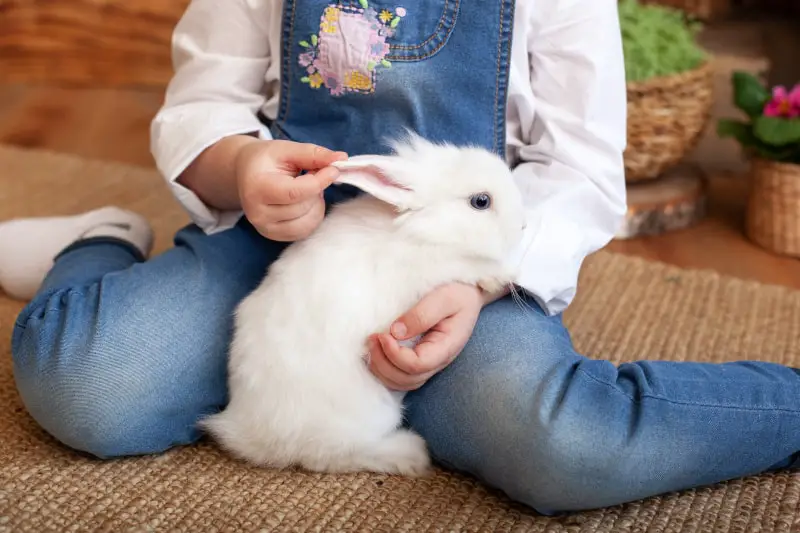When we think of a rabbit as a pet, we often mistakenly believe that they are all the same in terms of physical and social characteristics, and that they do not require much care. However the truth is that there are many breeds of rabbits, each one with its own needs and characteristics, which can be somewhat different.
To give you an idea, the American Association of Rabbit Breeders and the United Kingdom currently recognize around 50 unique rabbit breeds. Each breed has a variety of options concerning size, coat variations and eye color. Here I will cover 22 of the most popular breeds, including pictures.
In addition, there are many other mixed rabbit breeds which, although not standardized yet, are just as beautiful and can become great companions. Whether purebred or not, any one of them can become a perfect pet rabbit.
What Should I Consider Before Choosing a Pet Rabbit?
Having a rabbit demands commitment. If you bring it home, and then realize that it was not the right pet for you, it will be the rabbit that will end up suffering the consequences. Before you ask yourself which rabbit breed is best for you, be sure to consider the following:
- Available space: Rabbits vary in size from minis, which weigh as little as 2 pounds as adults, to giant breeds, which can weigh over 20 pounds. You must choose a rabbit breed according to the available space in your home.
- Small children: Small rabbits can be unsuitable for a home with small children, as these fragile bunnies could suffer serious injuries when handled by small children. To add to this, the smaller breeds tend to be more nervous and fragile, so I would not not recommended as pets for small children.
- Long hair vs short hair: Long-haired rabbits require considerable grooming to prevent their hair from becoming entangled. These rabbits have no possibility of keeping their coat clean and tangle-free by themselves. As a result, you must dedicate a lot of time to their brushing, grooming, and daily care. Short hair rabbits require less grooming effort. Failure to take care of this causes great suffering to these animals.
- Larger breeds of rabbits tend to have a shorter life span than smaller ones.
- Smaller breeds tend to be more restless and have a greater tendency to jump around.
- Larger breeds of rabbits can be affectionate and relaxed pets but require larger cages, more space for exercise, and more food.
What Breeds Are Best as Pet Rabbits?
With so many breeds of rabbits, so many colors, types of furs, and sizes to choose from, how can you decide which race is best as a pet? Any breed of rabbit can be a great companion. There are two characteristics that we can focus on to make this task a little easier: the adult size of the rabbit and the care it is going to need.
Some people are happy to bring home any rabbit, which is of great benefit to rabbits in shelters that need to be adopted. Other people may have a particular rabbit in mind. However, it’s good to remember that when it comes to living with a rabbit, the thing that matters the most is their personality, and that has little or nothing to do with breeds.
How to Classify Rabbits?
We will group rabbit breeds based on their size and weight. Similarly, there are different breeds with different hair lengths and hair textures. Mixed rabbit breeds will naturally have similar traits and appearances to their ancestors.
Generally speaking, the most popular pet rabbits belong to the lightweight and small categories that are much easier to handle. Nevertheless, many people prefer larger breeds for companionship.
Dwarf Rabbit Breeds (adult rabbit weight is less than four pounds)
- Britannia Petite: (2 to 2.5 pounds). These tiny, compact rabbits have relatively narrow heads, long ears, and an arched body line. Colors include black, white, chestnut, gray, otter, and sable. They tend to be more active than other breeds and require especially careful handling due to the delicate arched body type.
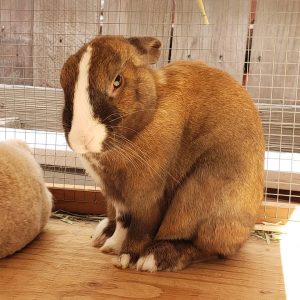
- Dwarf Hotot: (2 to 3 pounds). Their bodies are white, except for a black ring around the eyes. They have compact, rounded bodies and short, straight ears. Its size is small, which makes it suitable for living in a small apartment. They are usually a bit fearful, but once they get used to your presence, you can enjoy a quiet and docile friend.
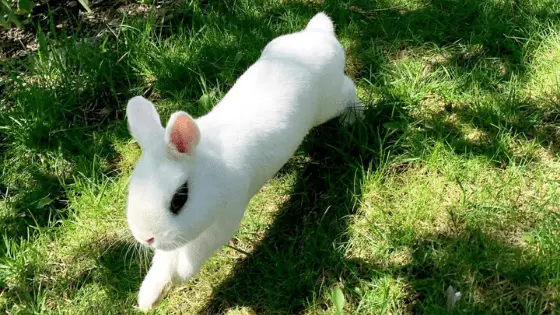
- Jersey Wooly: (2 to 3.5 pounds). They are distinguished for having short hair around their face and small ears, while the rest of the body has a long and dense fur. Their body is small and rounded. They come in many colors, however as they have have long hair they require extra time for grooming and special diets.
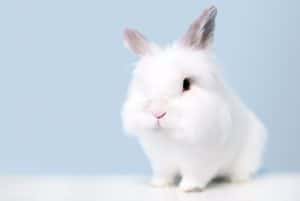
- American Fuzzy Lop: (3 to 4 pounds). These rabbits have a small body, a large flattened face, and adorable looped ears. They are similar to Holland Lop, but they differ in that they have long fur. These bunnies are available in different colors. Their long beautiful coat is used for wool production, as a result these rabbits will require extensive daily grooming and a special diet.
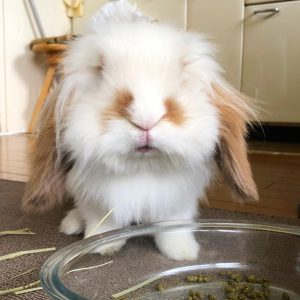
- Dutch rabbits: (3.5 to 5.5 pounds) . These beautiful rabbits can be any of six different colors: black, blue, chocolate, agouti (gray), steel, or tortoise. They are distinguished by always having a white blaze across the nose, a white band around the middle of the body, and four white paws.
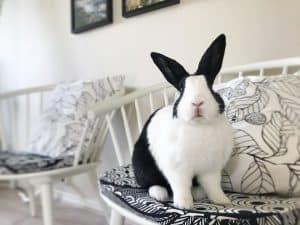
- Himalayas: (4.5 pounds). Also known as the Black Nose Rabbit, the Russian Rabbit, and the Egyptian Smut. The Himalayas are beautiful white rabbits with black, blue, lilac or chocolate ears, nose, legs, and tail. Their heads and bodies are long and narrow, and in addition they also have relatively short straight ears.
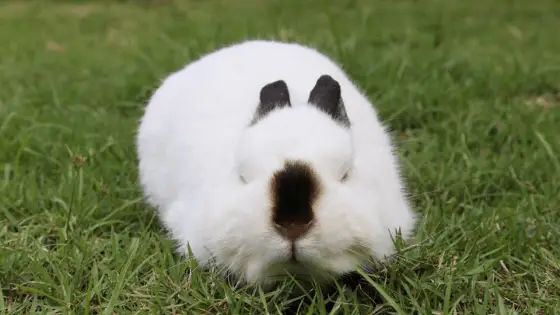
- Holland Lop: (4 pounds). These bunnies have flat heads with very long ears. Their bodies are small and sturdy. They have soft skin covered with a medium-long dense fur that comes in many colors. They are very social, restless, affectionate, gentle, and are not at all aggressive.
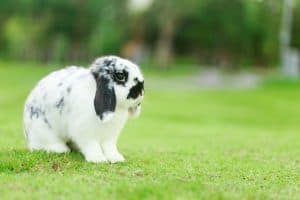
- Lionhead: (3 to 3 pounds). This breed has been gaining popularity in the last years, despite them not being recognized as a true breed yet. These beautiful rabbits have a well-rounded body. Their fur is dense and of medium length. They got their name from the two to three inches long fur around the heads.
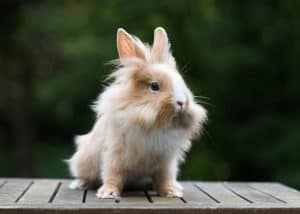
Small Rabbit Breeds (mature weight usually between 4 and 7 pounds)
- Dutch: (3.5 to 5.5 pounds). This is one of the most popular breeds in the world. Compact construction rabbits with well-rounded hindquarters. They have a characteristic white glow to the face, upper torso, and front legs. The toes up to the middle of the hind feet are also white. The rest of the body may be black, blue, chocolate, turtle, steel, or grey. This breed generally performs well with children.
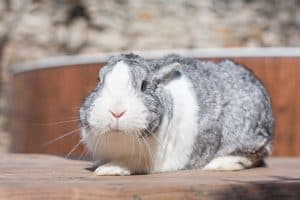
- English Angora: (5 to 7 pounds). English Angoras are well known for their beautiful fur. Thick wool covers the whole rabbit, including its face and ears. English Angoras can be shown in different color varieties. These rabbits require special diets and extensive daily grooming.
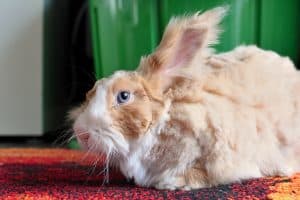
- Havana: (4.5 to 6.5 pounds). Havana rabbits have small bodies with broad shoulders and hindquarters. They have a narrow head with long, straight ears. Their fur can be black, blue, or chocolate. These rabbits are very playful and social, however most of them will not be very happy to be hugged for too long as they get bored. These rabbits are extremely energetic, which is why it is common to see them in shows and competitions.
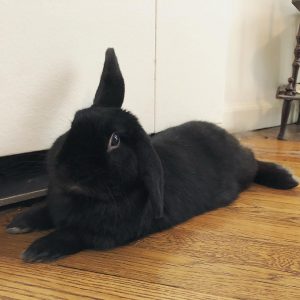
- Mini Lop: (4.5 to 6.5 pounds). Mini Lops are adorable. They are distinguished for having medium-length hair, brown eyes, round face, robust body, and wide, thick, long, droopy ears. Their hair is very thick and dense. They come in many different colors. Mini Lops are an excellent robust breed for children. These rabbits are very gentle, quiet, and enjoy being around people.
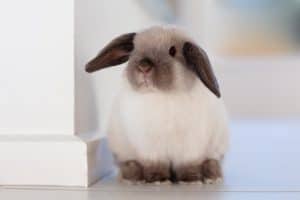
- Silver: (4 to 7 pounds). It is one of the oldest breeds. These rabbits are well known for the silver sheen given by its white guard hairs that mix with the colored part of the coat. The rest of its fur may be black, brown, or fawn. Their body is relatively long and has a narrow head with long, straight ears.
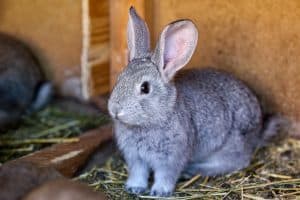
Medium Rabbit Breeds: (mature weight usually between 6 and 10.5 pounds)
- Angoras (9.5 to 10.5lbs). Angoras are of different types and sizes. In this category, we find the French, Giant, and Satin Angora. Due to their long wool, Angoras require regular handling and grooming sessions. Angoras also offer the possibility of using or selling the wool. They tend to be docile and easy-going.
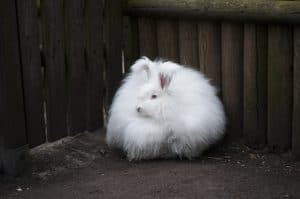
- English Spot (5 to 8 pounds) . These rabbits are easily identified for their unique markings on their coats. They have colorful butterfly marks on their nose, spots around their eyes, on their cheeks, and their flanks. They also have a long stripe along their back. Their body has an upright carriage with an arched back. These rabbits are very active and energetic.
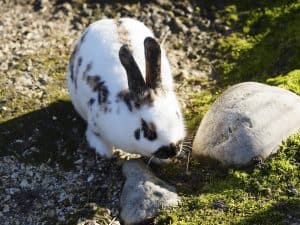
- Mini Lop (up to 6.5 pounds). Mini Lops have a very round head and adorable long floppy ears, and although they have the same genetic background as the Holland Lop, they are considered a separate breed. The Mini Lop is slightly larger than the Holland Lop but smaller than the French Lop. They come in a vast assortment of colors.
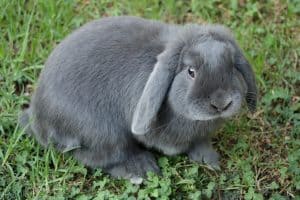
- Satin (up to 11 pounds). Satin bunnies are highly admired for their beautiful, shiny fur. These rabbits possess hollow translucent hair shafts that can reflect light, giving their coats an amazing shine. Satin rabbits come in 11 different colors.
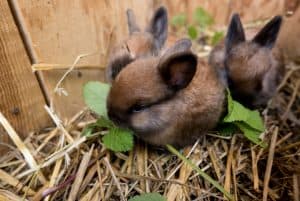
- Rex ( 7.5 to 10.5 pounds ). This is one of the most valued breeds as a pet, for its meat and fur. Their fur is five-eighths of an inch long, very dense, and soft to the touch. Many people compare it to a velvet carpet. In addition, rex rabbits come in a variety of colors as well as broken versions of each color. The Mini Rex (4.5 pounds) is a small version of the Standard Rex.
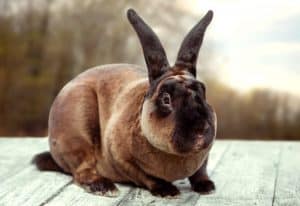
Large Rabbits (mature weight usually between 9 to 12 pounds)
- French Lop (up to 11 pounds). French Lops are among the largest rabbit breeds. These rabbits possess broad rounded heads and beautiful droopy ears. You will find them in six colors: gray or agouti, self, ticked, broken, shaded, and wideband. Despite being quite large, these rabbits are very gentle.
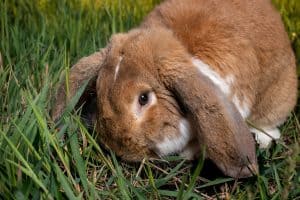
- Champagne D’Argent (up to 12 pounds). This is a breed that is highly prized for meat production. These rabbits have a distinctive silver coat. Their young are born black, but as they grow, silver takes over. Their coat’s final color looks somewhat gray to almost white, depending on the extent of the silver.
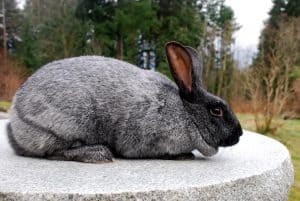
Giant Rabbits (mature weight often above 12 pounds)
- Flemish Giant (14 pounds or more). These giants are incredibly gentle and can be wonderful pets. Many Flemish Giants can reach 30 or more pounds. Continental Giants, a breed related to the United Kingdom, can reach 40 or more pounds. Flamingo Giants come in a variety of colors such as black, blue, fawn, light gray, sandy, steel gray, and ruby white.
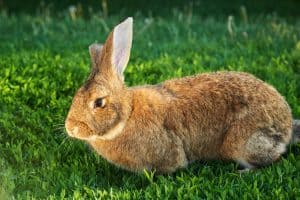
- Checkered Giant (over 12 pounds). These rabbits are white with black or blue spots on the nose, cheeks, back, and hindquarters. They have a fit type of body with a characteristic arch in the back. They have large heads and long straight ears. These rabbits are prone to injury and they are used extensively in competitions. Therefore this breed is recommended for more experienced owners.
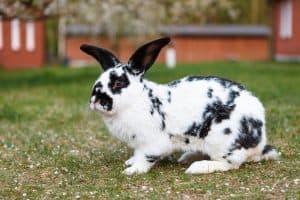
Rabbits have kept company with humans for as long as any other domestic animal, so it’s no coincidence that they are gentle, intelligent, loving, and extremely quiet. While most rabbits are relatively easy to maintain, certain breeds may have specific needs and require different care. As a result, we must be extremely cautious before we make a choice.

